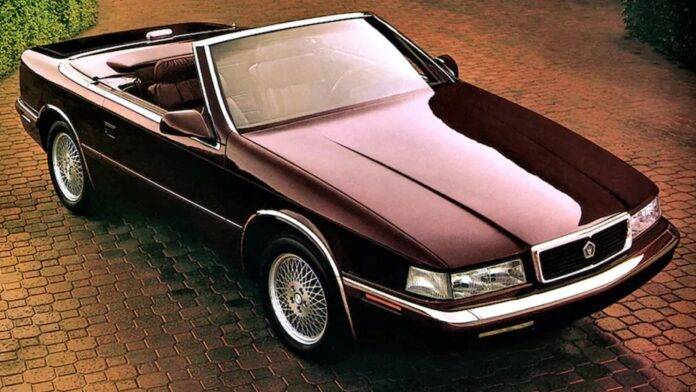Having stabilized Chrysler somewhat with sales winners like LeBaron, the best selling convertible in America, and Town & Country, Caravan, and Voyager, the best selling minivans ever, and proving with the Daytona and Laser that a 4-cylinder with a turbo and proper engineering could hang with competition packing 8-cylinders, Lee Iacocca decided it was time for the company to return to its former glory days of offering top level luxury performance cars.
While he brought back the Imperial brand for 1981, sales slid quickly, ensuring its demise by the end of 1983. Returning to the drawing board in the late 1980s, Chrysler introduced the Turbo Convertible, or TC, by Maserati and the new Imperial a few years later. Both gave Chrysler a competitive edge in the luxury market competing against the likes of DeVille, Continental, Park Avenue, Allante, Reatta, and other well-known models in the segment.
With the TC largely based on the LeBaron and the Imperial based on the New Yorker, it was a tough sell. Customers saw through the modified nature of both and had difficulty justifying the premiums, despite the fact that both were considerably distanced from their cousins. Especially the TC, which was literally an international effort between Chrysler and Maserati which begat a remarkable interior of hand-crafted Italian leathers, exquisite paint, and a one-off chassis. Buyers could also opt for the Maserati-enhanced engine, which gave the 4-cylinder a head designed by Maserati and crafted by Cosworth to help conjure up 200 HP. Backed by a Getrag 5-speed manual transmission, it gave TC a sportier feel. Meanwhile, Imperial buyers enjoyed higher-end leather upholstery, extra sound deadening material, increased soft surfaces inside, a refined suspension system, and an optional built-in hands-free phone system. Mind you, this is 1990.
Sales of both were lukewarm at best, but drew attention to the Chrysler brand, which is really what was needed. Interestingly, while neither TC or Imperial set any sales records, for the years both were in production, sales of other Chrysler models saw increases, including LeBaron, New Yorker, Daytona, Dynasty, and all those minivans. Halo cars sell. Just not themselves.
Modernizing their lineup, Chrysler introduced the new LH platform cars in May of 1993 for 1994. The top line offering was the LHS, which replaced the Imperial and Fifth Avenue models, with standard amenities such as leather front bucket seats, a center console with a floor shifter for the 4-speed automatic, dual-zone climate control, and electrically-operated everything.
LHS stood for LH platform Stretched, as it was longer than the New Yorker and Concorde, giving passengers more rear seat legroom. Chryslers new ‘Cab Forward’ architecture provided additional interior space, meaning LHS was cavernous inside. Cab Forward also allowed for the front and rear wheels to be placed further away from the interior, providing both a smoother ride, lower interior noise levels, and better handling.
The sleek design provided a very low drag coefficient, which further kept interior noise levels to a minimum, while aiding efficiency and overall performance. The 3.5L V6 was adept at hustling the big car around, offering nearly the same seat-of-the-pants feel as it’s competitors like Continental and Park Avenue, but with a remarkably planted feel, again, thanks to the Cab Forward design.
The exterior styling was a striking and refreshing breakaway from the boxy ChryCo predecessors, and the understated use of bright work was very modern. The interior was posh and luxurious, with a modern flare meeting classic cues. The seats were scrumptiously upholstered and tufted for a spectacular look and seemingly unmatched comfort, and few factory stereo systems could match Chrysler’s.
Despite all it had going for it, Chrysler LHS sold slowly compared to lesser-priced siblings New Yorker, Concorde, and Intrepid. Compared to Continental and Park Avenue, sales were abysmal, but counting sales of all four together, they very competitive. Finding one worth talking about today is nearly impossible, but maybe worth the search. After all, the low-hanging fruit isn’t always the best.

Recommended Reads
Learn more about Lee Iacocca on this Break/Fix TL:DR minisode below, or check out the article reviewing his autobiography.


















































